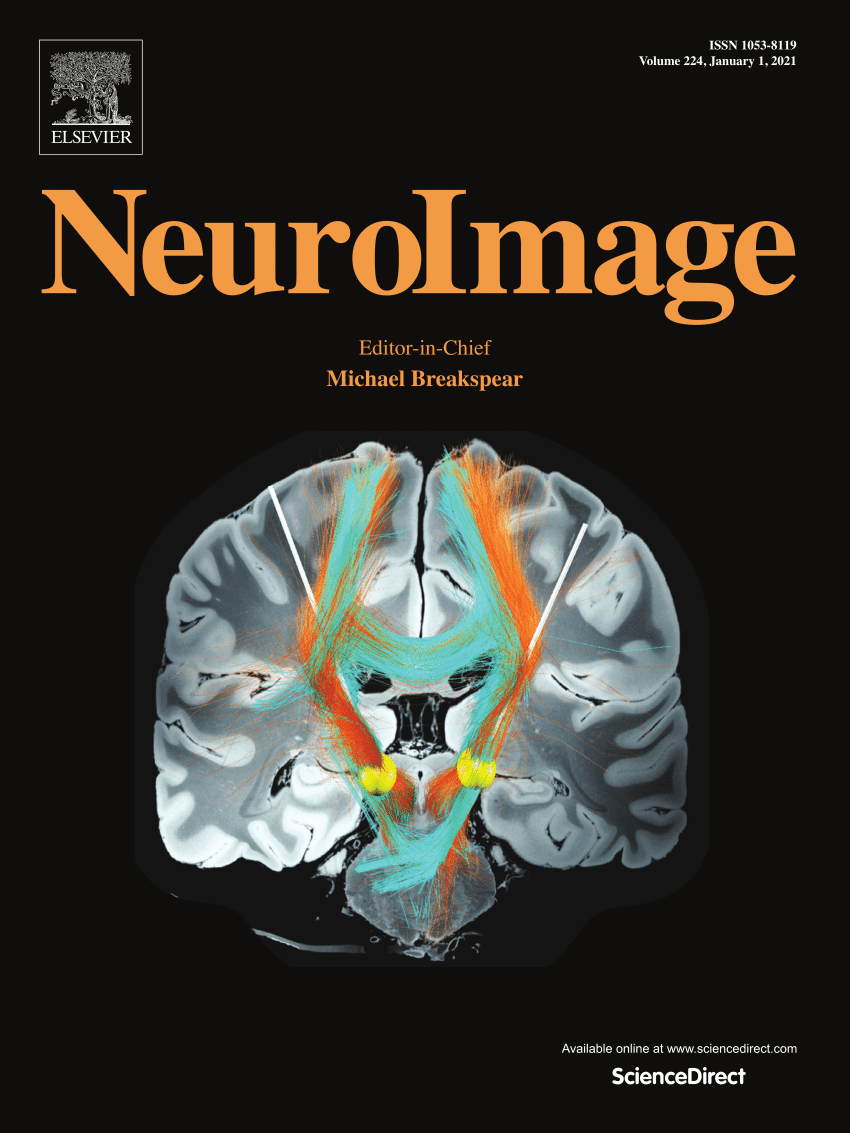Non-invasive MRI measurements of age-dependent in vivo human glymphatic exchange using magnetization transfer spin labeling
IF 4.7
2区 医学
Q1 NEUROIMAGING
引用次数: 0
Abstract
Background
The water exchange between brain parenchyma and cerebrospinal fluid (CSF) is considered to be responsible for glymphatic clearance of solutes and metabolic wastes from the brain, including amyloid-, a biomarker in neurodegeneration. Despite the potential significance, no noninvasive technique for in vivo measurement of parenchyma-CSF water exchange has been demonstrated in humans, capable of investigating age-related changes in glymphatic clearance.
Purpose
To demonstrate a noninvasive, translatable MRI technique capable of measuring glymphatic water exchange in humans and to apply this technique to examine age-related changes in the glymphatic exchange measures in healthy subjects.
Methods
Repeating on-resonance magnetization transfer (MT) RF pulses were applied to saturate macromolecules within the brain parenchyma and label its interstitial water, followed by measuring partial CSF saturation resulting from the parenchyma-CSF water exchange. Bloch simulations and phantom experiments determined the extent of direct CSF saturation by the MT pulses. An additional labeling nulling experiment was performed by preemptively saturating parenchyma spins to disable the following MT-based spin labeling, to examine non-exchange contributions to the observed CSF saturation. These techniques were applied to young (n = 6; ages 25–41) and elder (n = 6; ages 53–66) healthy participants to examine age-related changes in their saturation-based exchange measurements.
Results
Both Bloch simulations and phantom experiments indicated small (0.4-0.7 %) direct CSF saturation when B0 inhomogeneities and CSF T2 variations were considered. A statistically significant (P = 0.037) difference was observed in the average CSF saturation ratio within the subarachnoid space (SAS) between the young (4.7 %±0.5 %) and the elder (3.5 %±1.2 %) subjects, with their ages negatively correlating with this exchange metric (R2=0.34, P = 0.046). The substantial saturation reductions in the labeling nulling experiment (40–50 % in young; 10–30 % in elder) suggested parenchyma-CSF exchange as a substantial source of the observed saturation signal. These findings survived when the exchange metrics were compensated for potential atrophy-related dilution effect caused by variations in intra-voxel CSF volume.
Conclusion
Optimized MT-based parenchyma spin labeling followed by CSF partial saturation measurement demonstrated feasibility of a noninvasive MRI approach to detect glymphatic water exchange between human brain parenchyma and CSF in vivo, with statistically significant findings of age-related differences in the exchange measures.
求助全文
约1分钟内获得全文
求助全文
来源期刊

NeuroImage
医学-核医学
CiteScore
11.30
自引率
10.50%
发文量
809
审稿时长
63 days
期刊介绍:
NeuroImage, a Journal of Brain Function provides a vehicle for communicating important advances in acquiring, analyzing, and modelling neuroimaging data and in applying these techniques to the study of structure-function and brain-behavior relationships. Though the emphasis is on the macroscopic level of human brain organization, meso-and microscopic neuroimaging across all species will be considered if informative for understanding the aforementioned relationships.
 求助内容:
求助内容: 应助结果提醒方式:
应助结果提醒方式:


